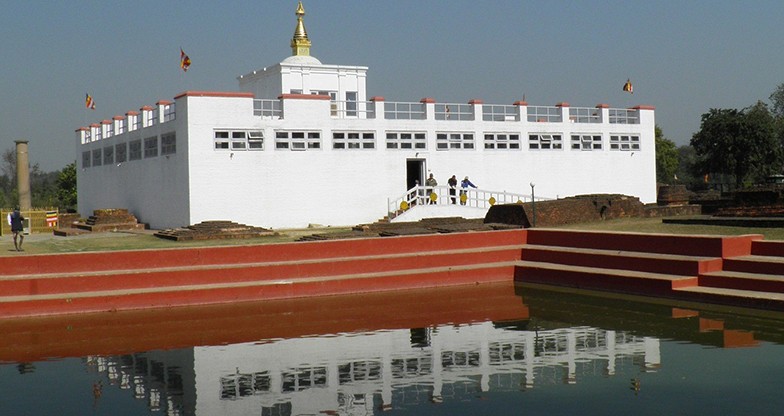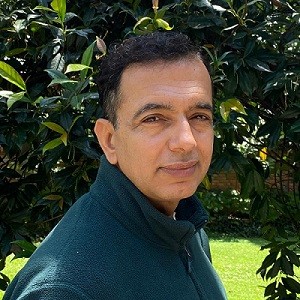Located some 27 km. west of Lumbini lies the ruins of historic town of ‘Kapilvastu’. Kapilvastu, also known as modern Piprahwa in the Lumbini Zone of Nepal, is one of the most holy Buddhist centres globally. Kapilavastu was the capital of the Shakya kingdom, and Buddha was born to king Shuddhodhana of this clan. The capital city of the Shakya clan, and one of the earliest Republics in the world, Kapilvastu witnessed the childhood and early family life of the Buddha in the royal palace. It was at Kapilvastu, the prince saw sorrow, pain, disease and death, the four sights which disturbed Him and He abandoned His life in search of the reality of life, and became the Buddha. Twelve years later after He attained enlightenment, the son of the city came back to His home, but not as a prince but rather as the Buddha, who preached His sermons over here.
Believed to be the capital of Shakya republic where the Lord lived and enjoyed his life until his thirteeth year, there are ruins and mounds of old stupas and monasteries made of kiln-burnt bricks and clay-mortar. In fact, the city of Kapilvastu are in such a grand scale that it could be easily be visualised as a seat of high culture. Kapilvastu is located in the southern Nepal, bordering India. Lumbini, the birth place of Siddharth Gautama, is located in Kapilavastu district of Nepal. Gautam Buddha spent his first twenty-nine years of life in this region.
Excavations carried out by the Archaeological survey of India relate Kapil Vastu to the Kushan period. The excavations include a stupa, of an ancient monastery named Devaputra, and two mounds, regarded as the ruins of King Suddhodhana’s palace. Other major attractions of Kapilvastu include stupas built by Ashoka and the Gupta Kings, relics of Lord Buddha, etc. Excavations by archaeological survey of India have revealed the relation of this place to the Kushan period. Two mounds have also been excavated at only a little distance (1.5 km) from this village which, is considered to be the ruins of King Suddhodhana’s palace.
Kudan: is located about two kilometers south of Taulihawa. It gives the visitors one more area of interest with a huge mound of structural ruins with a duster of four buildings and a pond excavated in 1962 indicating the existence of a huge Gupta style temple in ancient times. This place is identified as Nyagrodharama vihara, built by King Suddhodana for Lord Buddha.Lord Sakyamuni Buddha met king Suddhodhana here for the first time after enlightenment. Some scholars have also identified Kudan as the natal-town of Krakuchhanda Buddha.
Gotihawa: About 5 km. southwest of Taulihawa, is a village called Gotihawa which has an Ashokan pillar standing on a slab. Adjoining the pillar towards its northeast is a huge stupa made by wedge shaped Mauryan bricks. This site is identified as the birth place of the past Buddha Krakucchanda.
Niglihawa: Another site of archaeological importance, about 8 kms, northwest of Taulihawa, is Niglihawa. The site has a quadrangular pond locally known as Niglisagar. On the western bank of the pond there are two broken pieces of the Ashokan pillar. The pillar bears two peacocks on the top part and an inscription which reads, om mane padme hum.Niglihawa is identified as the holy place where Kanakamuni Buddha was born
Sagarhawa: About 12 kilometers north of Taulihawa, is a forest called Sagarhawa. In the midst of it is a huge rectangular tank, which is popularly known as Lumbusagar, or a long tank. The ancient tank ruins, which were excavated and identified by Dr. Alois A. Fuhrer as the “Place of the Massacre of the Shakyas” in 1859, can be seen on the Southwest banks of Sagar.
Devadaha or the the country of Koliyas, where Mayadevi, mother of Gautama Siddhartha, was born, is certainly a holy place of pilgrimage and a household name for the Buddhists. The Koliyas of Devadaha were the maternal tribe of Gautama Buddha. Devadaha is located 38 kilometres east of Lumbini near the village of Khairhani.
Tilaurakot is one among the many important Buddhist sites of interest around Lumbini, located some 27 kms. west of Lumbini. Here lies the ruins of the historic town of Kapilvastu believed to be the capital of Shakya republic where Siddhartha lived and enjoyed his life until his thirtieth year. There are ruins and mounds of old stupas and monasteries made of kiln burnt bricks and clay mortar. The remains are surrounded by a moat and the wall of the city is made of bricks.
The Ramgram Kingdom: The Ramgram Kingdom was 60 kilometers to the east of the holy place of the Buddha’s birth. The King was one of eight Kings who obtained Buddha’s relics and built a pagoda named Ramgram Pagoda.



 Difficulty:
Moderate
Difficulty:
Moderate










